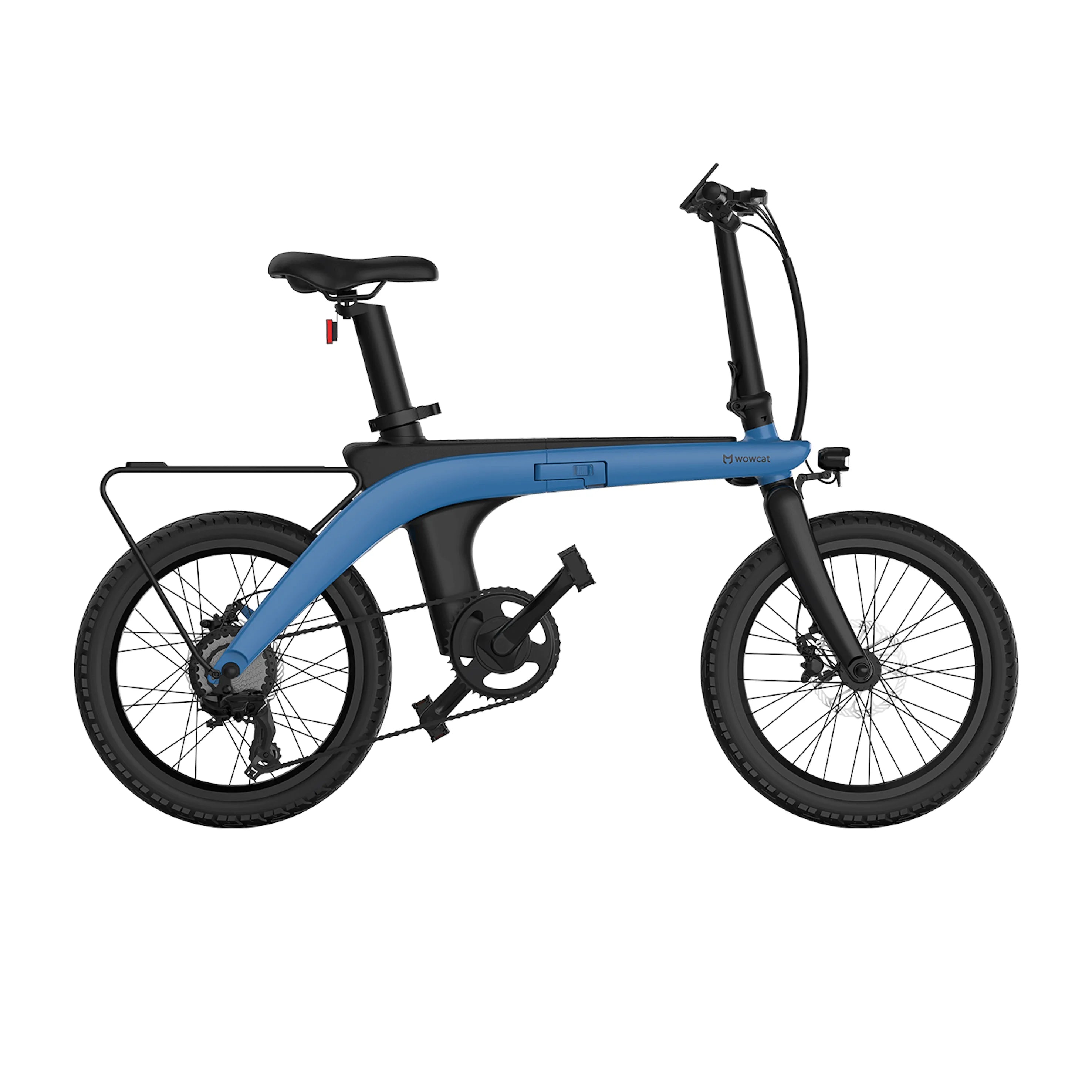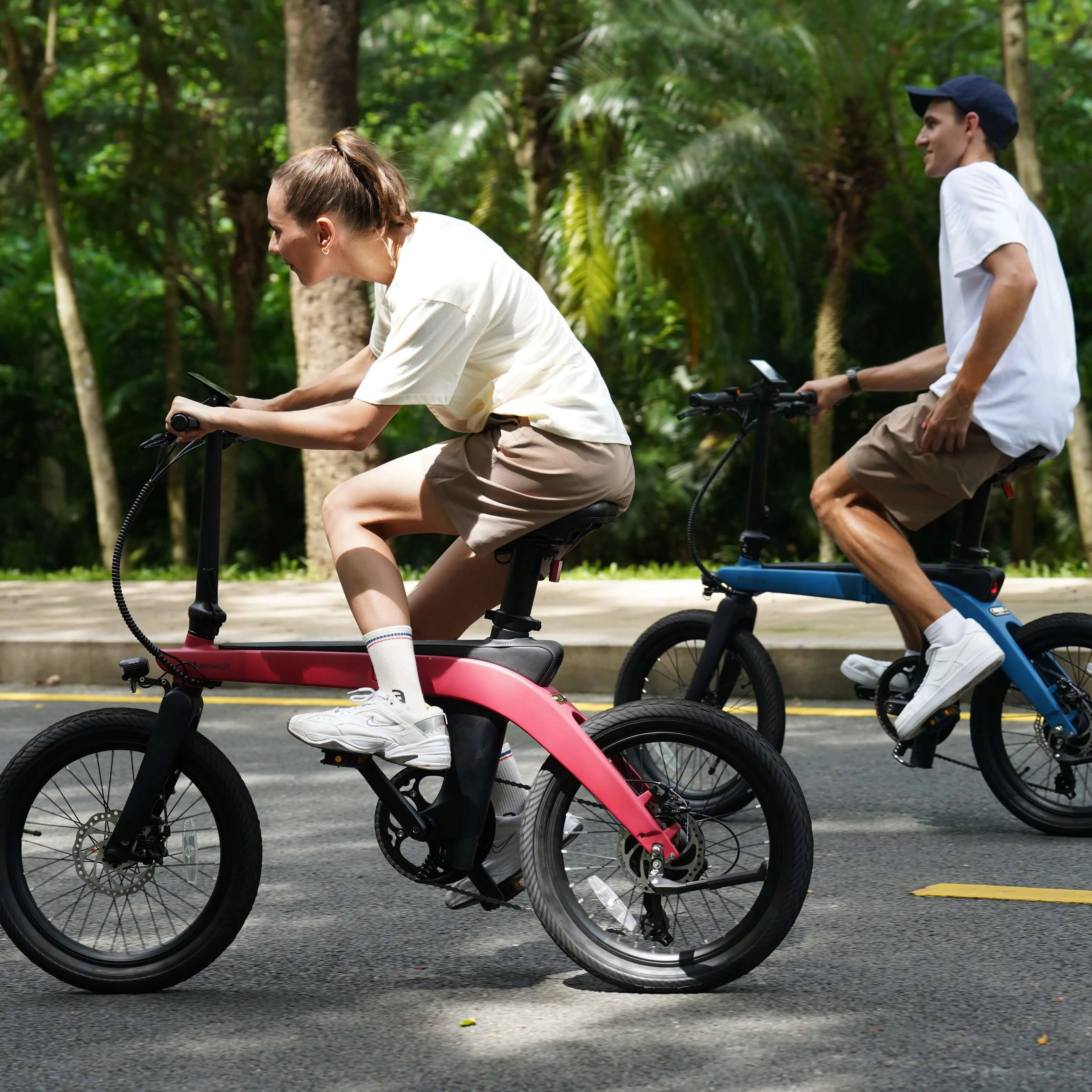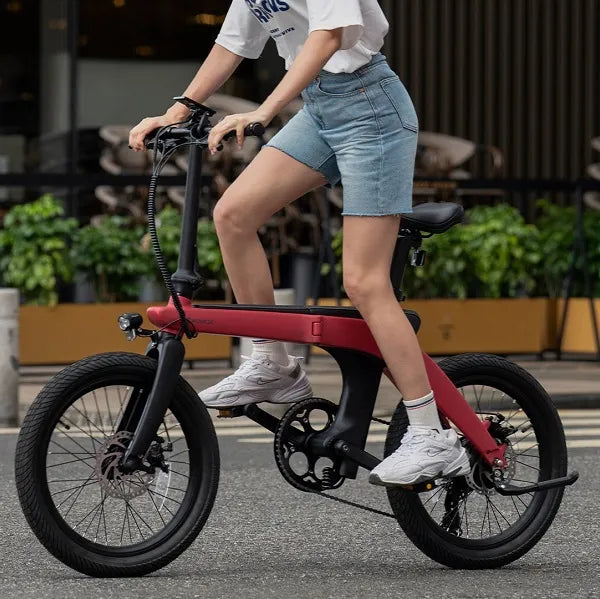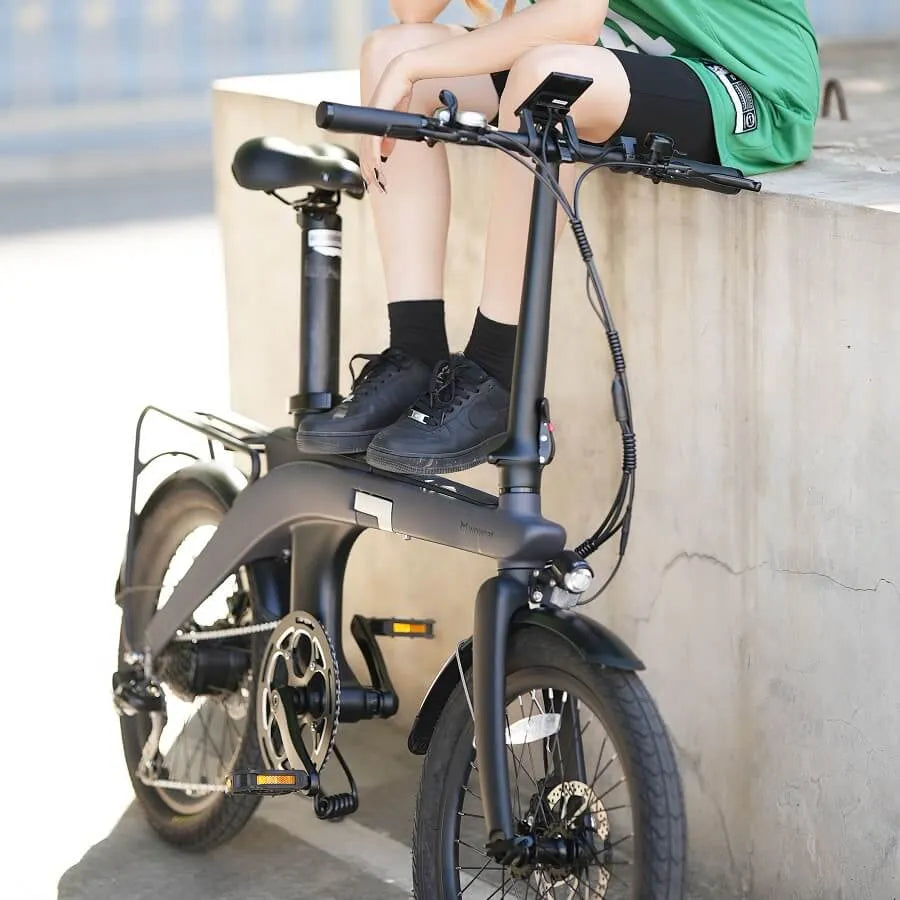Embarking on the exciting journey of electric biking brings a fusion of freedom, speed, and sustainable travel. As enthusiasts of the e-bike revolution, we recognize the exhilaration that comes with every pedal-assisted adventure. Amid the joy of exploration, one vital aspect that deserves our attention is often underestimated – the proper care of your e-bike tires. In this comprehensive guide, we'll uncover the essential "Best Practices" to ensure you "Keep Your E-bike Tires in Tip-top Shape." These practices not only enhance your riding experience but also contribute to the longevity, safety, and optimal performance of your e-bike.

Why Tire Pressure on E-bikes is so Important
Maintaining the correct tire pressure on e-bikes is of paramount importance for various reasons that significantly impact the overall performance, safety, and longevity of your electric bicycle. The optimal tire pressure ensures an efficient and comfortable riding experience while simultaneously influencing critical factors such as speed, range, and traction. In this article, we will delve into why tire pressure is a key consideration for e-bike riders and explore the multifaceted importance of keeping those wheels properly inflated. Understanding and adhering to the recommended tire pressure not only enhances the overall performance of your e-bike but also contributes to a safer and more enjoyable ride.
Factors Affecting Tire Pressure
Tire pressure is a critical element influencing the performance and safety of your bicycle, and several factors come into play when determining the optimal inflation level. Understanding these factors is essential for maintaining the right tire pressure for your specific riding conditions. Here are some key factors that can affect tire pressure:
Rider Weight:
The weight placed on the tires, including the rider's weight and any additional cargo, influences the amount of pressure the tires should bear. Heavier riders may require higher tire pressure to support the load adequately.
Terrain:
The type of terrain you ride on impacts tire pressure requirements. Different surfaces, such as smooth roads, rough trails, or gravel paths, necessitate adjustments in tire pressure for optimal traction, comfort, and performance.
Riding Style:
Aggressive riders who engage in fast and dynamic maneuvers may prefer slightly lower tire pressures to enhance grip and shock absorption. On the other hand, smoother riders or those covering long distances might opt for higher pressures for better rolling efficiency.
Tire Size and Type:
The size and type of tires on your bicycle play a crucial role in determining the recommended pressure. Larger tires generally require lower pressure, while smaller, narrower tires may need higher inflation levels.
Weather Conditions:
Ambient temperature affects tire pressure. In colder temperatures, air contracts, leading to lower pressure, while warmer conditions can cause the air to expand, increasing tire pressure. Regular checks and adjustments become especially important in fluctuating weather.
Bike Design:
The design of your bike, including frame geometry and suspension, can impact how weight is distributed on the tires. Understanding your bike's design helps in fine-tuning tire pressure for optimal handling and comfort.
Load Distribution:
Consider how weight is distributed between the front and rear tires. Properly balancing the tire pressure between the two helps maintain stability and control during rides.
Manufacturer Recommendations:
Always refer to the manufacturer's guidelines for your specific bike model and tire brand. These recommendations provide a baseline for the appropriate tire pressure, taking into account design specifications and intended use.
Regularly monitoring and adjusting tire pressure based on these factors not only enhances your biking experience but also contributes to a safer and more efficient ride. Experimenting with different pressures allows you to find the sweet spot that aligns with your preferences and riding conditions.

Ways to Keep Your Ebike Tires in Shape
Maintaining the condition of your e-bike tires is crucial for a smooth and safe riding experience. Here are some effective ways to keep your e-bike tires in optimal shape:
Regular Inspections:
Make it a habit to visually inspect your tires before each ride. Look for signs of wear, cuts, or embedded debris. Ensure that the tread is in good condition, and there are no visible bulges or abnormalities.
Proper Inflation:
Maintain the recommended tire pressure as specified by the manufacturer. Underinflated tires can affect stability, increase rolling resistance, and risk damage, while overinflated tires may result in a harsher ride and reduced traction.
Invest in Quality Tires:
Choose high-quality tires that are suitable for your riding style and the terrain you frequent. Durable and puncture-resistant tires can enhance longevity and reduce the likelihood of flats.
Mind the Terrain:
Adjust your tire pressure based on the terrain you'll be riding on. Lower pressures are generally suitable for off-road or uneven surfaces, providing better traction, while higher pressures are ideal for smoother roads, offering improved efficiency.
Avoid Overloading:
Be mindful of the weight limit recommended for your e-bike. Overloading can lead to increased wear on the tires and negatively impact overall performance.
Proper Storage:
Store your e-bike in a cool, dry place, away from direct sunlight. Prolonged exposure to sunlight and extreme temperatures can degrade the rubber compound of the tires.
Rotate Your Tires:
If your e-bike has multiple tires, consider rotating them regularly. This helps distribute the wear more evenly across all tires, extending their overall lifespan.
Use Tire Sealant:
Consider using a tire sealant to prevent and repair punctures. These sealants can quickly seal small punctures, reducing the likelihood of flats during your rides.
Mind Your Braking Habits:
Avoid abrupt or harsh braking, as it can accelerate tire wear. Gradual braking not only extends the life of your tires but also contributes to a smoother ride.
Keep Them Clean:
Regularly clean your tires to remove debris, mud, or any substances that might compromise their integrity. A clean tire is less prone to damage and provides better traction.
Protect from Extreme Conditions:
If you anticipate extreme weather conditions, such as heavy rain or snow, take precautions to protect your tires. Wet conditions can reduce traction, so adjusting your riding style and checking your tires afterward is advisable.
By incorporating these practices into your routine, you can ensure that your e-bike tires remain in top condition, providing you with a safer, more enjoyable, and longer-lasting riding experience.
Ways to Store Ebike Tires Properly
Proper storage of e-bike tires is essential to maintain their integrity and extend their lifespan. Here are some effective ways to store e-bike tires:
Clean and Dry Before Storage:
Ensure that the tires are clean and dry before storing them. Remove any dirt, mud, or debris that may have accumulated during rides. A clean tire is less prone to damage and deterioration.
Deflate to Recommended Pressure:
Before storing your e-bike tires, deflate them to the recommended pressure suggested by the manufacturer. This helps prevent unnecessary stress on the tire walls and maintains their shape during storage.
Store in a Cool, Dry Place:
Choose a cool, dry storage space away from direct sunlight. Excessive heat and sunlight can accelerate the aging process of the rubber compound, leading to premature deterioration of the tires.
Avoid Exposure to Ozone:
Ozone, often present in electrical equipment and motors, can have a detrimental effect on rubber. Store your e-bike tires away from such sources to prevent ozone exposure, which can cause cracking and degradation.
Use Tire Covers:
If possible, cover your e-bike tires with tire covers or individual tire bags. These covers provide an additional layer of protection against dust, UV rays, and other environmental factors that can impact tire integrity.
Keep Tires Elevated:
Store the tires off the ground to prevent direct contact with cold or damp surfaces. Use tire racks or hang them on hooks to ensure proper air circulation and reduce the risk of moisture-related damage.
Rotate Tires Periodically:
If you have multiple sets of tires, consider rotating them periodically. This practice helps distribute the weight and pressure evenly, preventing flat spots and extending the overall lifespan of the tires.
Avoid Sharp Objects:
When storing tires, ensure they are kept away from sharp objects, tools, or other items that could puncture or damage the rubber. A careful storage environment minimizes the risk of accidental harm.
Label and Date:
If you have multiple sets of tires for different purposes, label them accordingly and include the date of storage. This makes it easier to keep track of each set's age and usage history.
Check Periodically:
Periodically check stored tires for any signs of damage, wear, or deterioration. If you notice any issues, address them promptly to prevent further damage during storage.
Avoid Hanging by the Wheel:
When hanging tires, avoid suspending them solely by the wheel. This can cause the tire to deform over time. Use a tire rack or support the tire at multiple points to maintain its shape.
Conclusion
In conclusion, the proper care and maintenance of your e-bike tires are fundamental to ensuring a safe, smooth, and enjoyable riding experience. By implementing the recommended practices for tire maintenance and storage, you not only maximize the lifespan of your tires but also contribute to the overall performance and safety of your electric bicycle.











